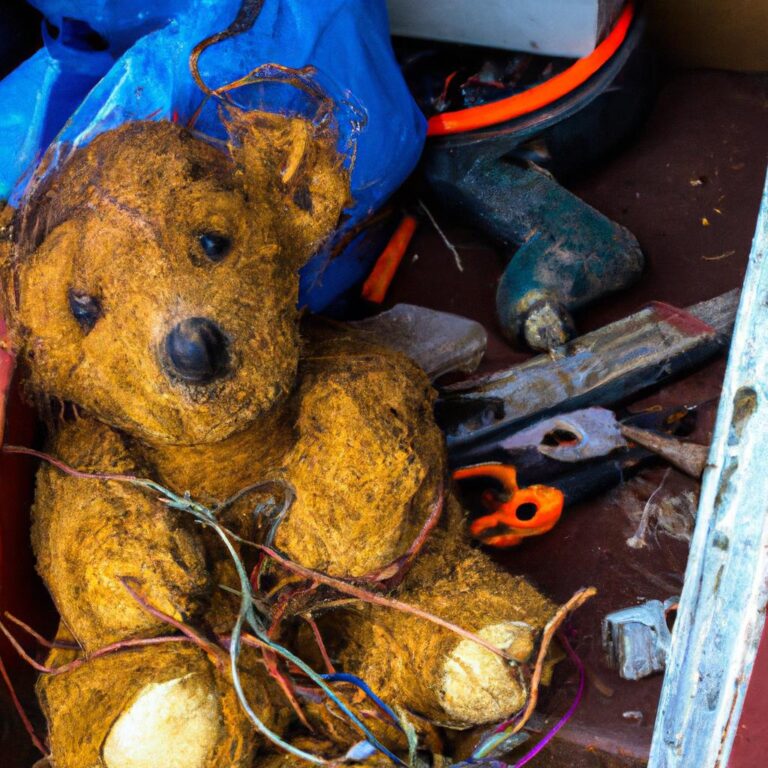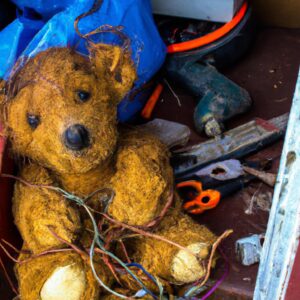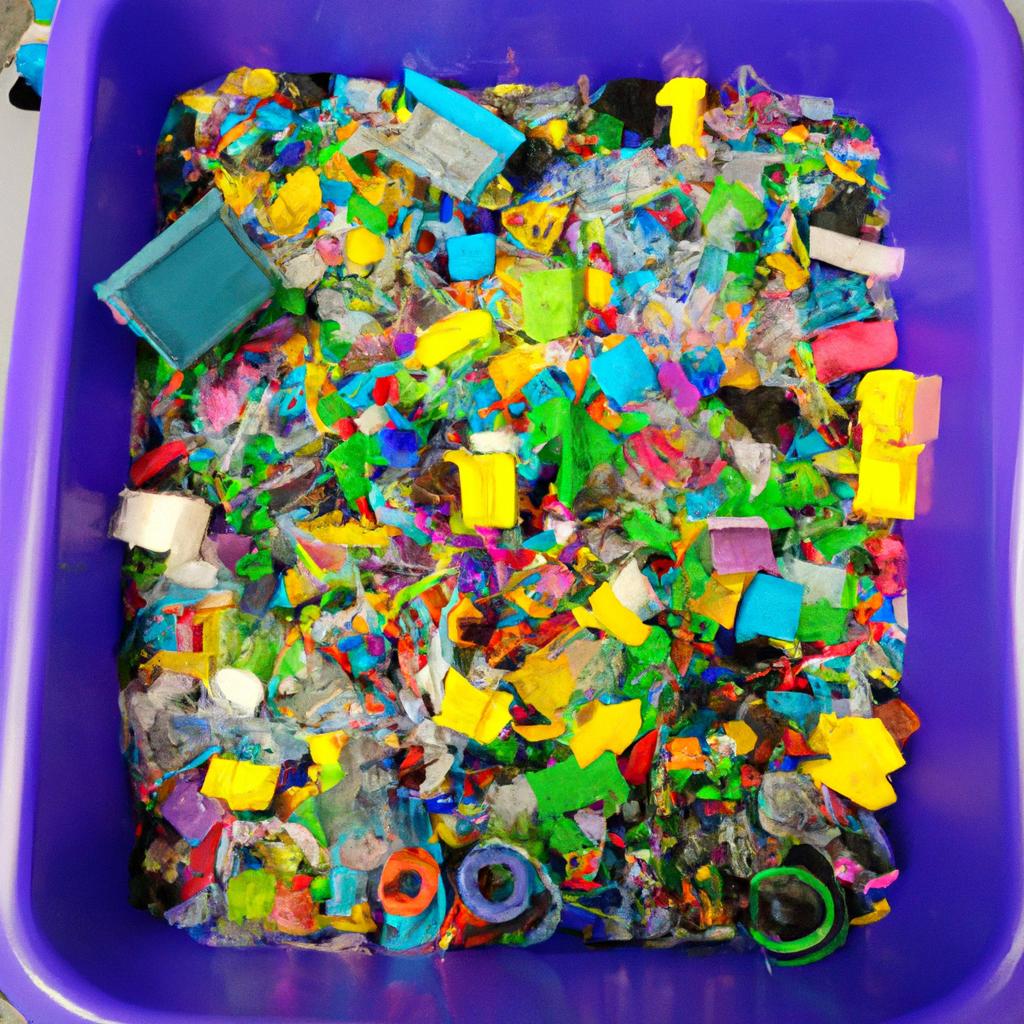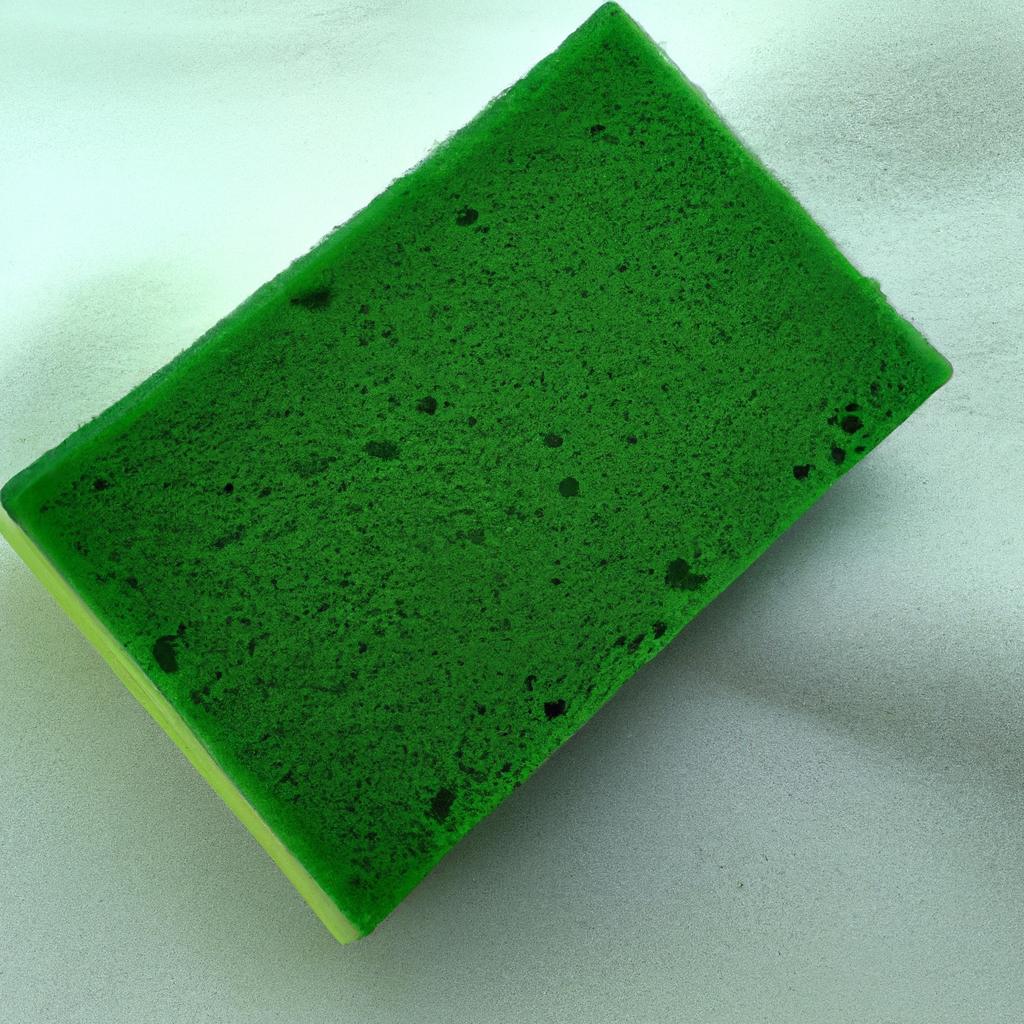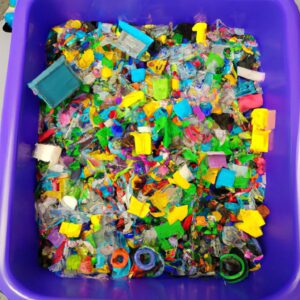Introduction: Toy Repair and Restoration
Toy repair and restoration is a highly rewarding and enjoyable hobby for people of all ages. It involves inspecting, cleaning, repairing and restoring old toys to their former glory so that they may be cherished by both adults and children alike. By taking the time to restore old toys, you can bring a piece of history back to life and create a sentimental piece that will last for many years to come.
In this guide, we will provide readers with step-by-step instructions on how to evaluate, clean, repair, and finish toy restoration projects. We will outline the tools and supplies needed for each step of the process as well as providing troubleshooting tips and advice on how to finalize and maintain toys after they have been restored.
By the end of this guide, readers should have a better understanding of how to successfully bring old toys back to life and should be ready to tackle their own toy restoration projects with confidence!
Toy repair and restoration is the process of bringing old, broken, and worn down toys back to its original state. This process includes cleaning, repairing, restoring, and sometimes even replacing parts of the toy. In some cases, it can also involve making modifications or upgrades to the toy.
All of these steps can be completed by anyone with a bit of patience, skill, and the right tools. This guide will provide readers with detailed information on how to understand, evaluate, clean, and refurbish toys for the ultimate repair and restoration experience. With the right guidance, creativity, and effort, any toy can be brought back to life!
Tools and Supplies Needed for Toy Restoration
Toy restoration requires a few basic tools, supplies, and materials to ensure a successful and professional-looking finish. In general, you’ll need a few screwdrivers, sandpaper in various grits, wood glue, a set of metal files, some clamps to hold the toy parts together while gluing, and paint that is suitable for the material of the toy. You also may want to have some aerosol sealants to protect the finished toy.
These supplies can generally be bought at any local home improvement store or craft supply store. You can also use a variety of specialty tools, such as a soldering iron, to make more intricate repairs and replacements.
If you’re using wooden materials, it’s important to choose wood that is appropriate for the task at hand. Be sure to check the grain structure of the wood before purchasing. The grain should be tight and even, meaning that the lines are close together and lie flat against the surface of the wood.
When painting, make sure to read labels and research the type of paint you’re using on the particular type of toy material you’re working with. There are many types of paints that are not waterproof or durable enough to withstand the test of time. Additionally, you should look for paints that are non-toxic and safe for children to play with.
Evaluating Toys for Repair or Restoration
Restoring a toy to its former glory can be a challenging and rewarding endeavor. Before starting the repair or restoration, it is important to evaluate the toy in order to assess the condition and extent of damage. Doing this assessment will also help you determine the supplies and tools needed for the project.
When evaluating a toy, you’ll need to inspect both the inside and outside of the toy for signs of damage. Look for cracks, dents, or breaks in the toys structure. Also, check to see if any parts are missing or broken, such as buttons, wheels, or strings. If there is old paint or finish on the toy, check for chips or scratches that may need to be covered.
It is also important to check the integrity of the toy’s components. Check whether any pieces are loose, broken, or coming apart, and look for any other areas that need to be addressed. Finally, examine the toy to see if any parts need to be replaced or repaired. Once you have evaluated the toy and identified the necessary repairs, you will be ready to begin restoring your beloved toy.
Cleaning and Preparing Toys for Repair
When dealing with old toys, one of the most important steps in repairing them is cleaning and preparing them for work. This can be done in several ways, such as using a mild detergent and warm water to wash away dirt and grime, or by using a damp cloth to wipe away debris. If there are any stubborn spots, it may be necessary to use an appropriate cleaning brush or a soft sponge with mild detergent. It is important to be gentle while cleaning and not to scrub too hard, as this could cause damage.
After cleaning, the toy should be dried completely before beginning any repair work. Heat guns, blow dryers, or hairdryers can all be used for this purpose. Once the toy is completely dry, it should be inspected for any rust, cracks, or broken pieces that need to be replaced. If needed, this can be done with the appropriate tools. It is also important to remove any decals or labels that may be on the toy, as these can be damaged during the repair process.
Finally, it is important to make sure that the toy is fully secure before attempting any type of repair. Using a set of clamps can help to keep the toy in place while working on it, which will make the repair process easier and more efficient.
Types of Common Repairs
Toy repair and restoration can involve performing a wide range of repairs, from simple maintenance to more complex repairs. Common repairs may include cleaning, replacing parts or components, painting, or troubleshooting. Depending on the type of toy being repaired, different kinds of work may be necessary.
Maintenance & Cleaning
One of the most common types of repairs is maintenance and cleaning. This includes dusting, cleaning the surface and any small components, and checking for signs of wear or damage. Making sure all moving parts are lubricated can help ensure a smooth working toy.
Replacing Parts
Replacing broken or missing parts is another common type of repair. Depending on the kind of toy, replacing small parts, like screws, batteries, springs, and gears can be a relatively simple task. However, larger plastic parts with intricate details may need specialized tools and skills to fix.
Painting & Finishing
Painting and finishing is typically the most difficult type of repair. Repainting may involve sanding off old paint, applying primer, and then several layers of finish paint. For certain toys, the process also includes detailing with fabric paints, stencils, and other materials.
Troubleshooting
Troubleshooting is a important part of the repair process, and involves identifying and solving mechanical issues. Once the mechanical problem is diagnosed, the toy usually requires additional repairs before it can be returned to its former glory.
Painting and Finishing Techniques
When it comes to painting and finishing a toy, there are many approaches and techniques you can use. The goal is to make the toy look as nice as possible, while still maintaining its authenticity. Choose the paint which is suitable for the type of material your toy is made from: water-based, acrylic, or oil-based paints can be used on plastics, whereas oil-based paints are better for wooden toys.
To start, ensure the surface of the toy is clean and dry before you begin painting. It is important to use multiple thin coats of paint, allowing time for each coat to fully dry before adding the next. For a more vintage look, layer different colors, drawing inspiration from the original toy’s colors. To protect the paint, apply a sealer or varnish afterwards.
If the toy has any details, such as ridges, intricate designs, or lettering, these can be highlighted with a fine-tipped brush or a toothpick. To add texture, consider techniques such as sponging, stippling, crackling, and glazing, which all involve using a different type of paint or wax.
Refurbishing Wooden Toys
Wooden toys are one of the most common types of toys found in homes and collections. They provide a sense of nostalgia, and with proper care and attention, can last for generations! Repairing and restoring wooden toys requires special tools and skills to achieve a first-class finish.
The first step is to assess the toy for any structural damage or wear. If parts have been lost over time, it’s important to get replacements as close to the original as possible. Start by taking a photo of the original toy before beginning any repairs as reference. Many woodworkers can replicate the parts required if they cannot be found.
Once the repairs have been made, use sandpaper to prepare the surface for refinishing. Use a fine-grit paper, starting at 180-220 grit, and finishing with a 400-600 grit paper for a smoother surface. Working from coarse to fine will help you move away from any major scratches or dents.
The next step is to remove any remaining dirt or dust using a vacuum cleaner or compressed air. It is also a good idea to wipe down the toy with a cloth and denatured alcohol to remove any residue left from the sanding process.
Now you’re ready for the finishing touches! If you’d like to paint your wooden toy, there are a multitude of colors you can choose from – water-based paints are considered the safest choice. Alternatively, you may prefer to finish your toy with a varnish, wax, or oil treatment, each of which provides a different look and feel.
Finally, it is recommended to finish your toy with a protective coating. This will help protect the toy from any spills and wear and tear. As refurbishing wooden toys can be a time-consuming and delicate process, take your time and be sure to enjoy the end result!
Replacing Parts in Toys
At times, when restoring toys, you may find that some of its parts have been lost or damaged beyond repair. In such cases, it may be necessary to replace certain parts. This could include small pieces like screws, nuts, and bolts, or larger items such as wheels, motors, or springs.
Replacement parts can often be found in hardware stores or home improvement centers. If the part is not available in these stores, you may need to look online for a company that specializes in toy replacement parts. A few online retailers to consider are Toy Fixer, Toy Restorer, and Toy Part Restorationist.
When installing new parts, it’s important to take your time and follow the instructions provided. Pay attention to any warnings and remember to check the documentations for any compatibility issues before ordering parts. Make sure all new parts are safely secured before using the toy.
It’s also a good idea to test the toy thoroughly before putting it back into service. So, after replacements have been made, turn the toy on and make sure everything is working properly.
Troubleshooting Damaged Toys
When a toy is damaged, sometimes it can be difficult to identify how it happened and what needs to be done to fix it. Troubleshooting is the process of figuring out what went wrong and how to fix it. It is important to understand the basics of troubleshooting damaged toys in order to repair them correctly and safely.
First, determine if the damage is repairable. Some damages may be too extensive to be worth repairing. If the damage is minor, it may be easier and more economical to repair the toy rather than buy a new one. If the damage is severe, it is better to find a replacement or find a professional to do restoration work.
Once it has been determined that the toy can be repaired, it is important to carefully inspect the toy for clues about what happened. Look for cracks, missing parts, broken pieces, or any other signs of damage. Identify areas that may require replacement parts or repairs. Then, list out all the materials and tools that will be needed to make the repairs.
The next step is to find out the best way to make the repairs and then proceed carefully. Different types of repairs such as soldering, gluing, or replacing parts may require different skills and tools. Consult with experts or use online resources to learn how to make the necessary repairs. Lastly, test and double-check the toy before putting it back into use to ensure that it is safe and functioning properly.
Finalizing and Maintaining Toys
Once the repairs and restorations have been completed, it’s time to give the toy a good finishing. This will involve cleaning the toy once more for any dust or dirt left behind, checking the parts and fastenings, and applying some paint or varnish if necessary. Sealing the surface with varnish or wax can make the toy resistant to dirt and water, while using acrylic paint or markers can help to keep the colour vibrant.
To keep your toys looking their best, you should also take the time to maintain them. Regularly check for signs of wear, and repair any damage as soon as possible. If the toy is made from plastic or metal, you can use a damp cloth to wipe away all the dust and grime. For wooden toys, use a mild detergent and a soft brush, then dry with a cloth. You may also need to apply some protective wax to the surface of the toy, and make sure to repaint or touch up any parts that may be fading.
Conclusion: Review of Benefits of Toy Repair and Restoration
Toy repair and restoration can be a daunting and time-consuming process, but it offers many rewards. It is a great way to preserve old toys that are meaningful to families, as well as to breathe new life into old and beloved favorites. The techniques discussed in this guide give toy collectors a variety of options for restoring their nostalgic treasures.
With proper research, tools, and supplies, toy enthusiasts can accurately assess, prepare, and repair a range of toys. Painting and finishing techniques can help revive toys that need a fresh coat of paint, while replacement parts can make broken toys operational again. Troubleshooting, finalizing, and maintaining the toys will provide lasting results.
Remember, practice and patience are essential when it comes to toy repair and restoration. Even with the knowledge provided in this guide, it takes a certain level of skill and devotion to bring these old toys back to life. But if you take on the challenge, you can create something incredibly special that will be cherished for years to come.
comments: 0
